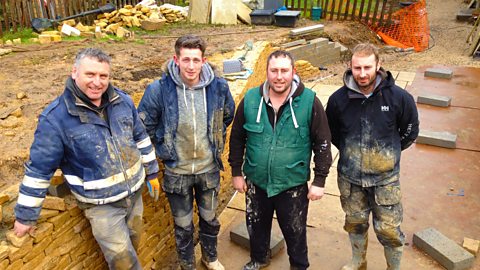Asking the right questions
Watch the video to find out more.
Speaker 1: This is my kitchen, and I've cleared everything under there.
Speaker 2: Thank you.
Speaker 1: As you can see, there's lots of dripping into that bowl, there.
Speaker 2: OK.
Speaker 1: Not sure where that's from.
Speaker 2: OK, I'm just going to check the top part first make sure that's not loose.
Speaker 1: OK.
Speaker 2: OK, well, the top bit's tight.
I'm just going to check the bottom bit.
Speaker 1: OK.
Speaker 2: OK, I can feel a leak coming from the top of the trap.
Normally, what that means is there's a black washer that has dissolved-
Speaker 1: Oh.
Speaker 2: Which is what's causing the water to drip down.
Have you tried tightening it up yourself?
Speaker 1: Um No.
Speaker 2: To see if any parts are loose?
Speaker 1: No, I didn't touch it, no.
Speaker 2: OK, what I'll have to do, I know I haven't got one of these on my van at the moment, I'll have to go to the suppliers.
Speaker 1: OK.
Speaker 2: Get it from there and then I'll come back to fix it.
Speaker 1: That's great.
Speaker 2: OK?
Speaker 1: OK. I'll show you the way.
Speaker 2: Thank you.
Using polite language
Test your knowledge with this activity.
Reading the details
Watch the video to find out more.
Speaker 1: (TO AUDIENCE) When I go to the builders merchants, I have my little materials book with me.
This is what I need. Just to get some other bits now.
Once I carry out any jobs, I write it down with the job number what materials I need.
Speaker 1: (TO OTHER PEOPLE) You all right, Lee? How's it going?
Speaker 2: How about yourself?
Speaker 1: Good, thank you. Just got a few bits to get, all on different jobs, as per usual.
Speaker 1: (TO AUDIENCE) It's very good, building relationships in my job.
I do speak to a lot of people.
You know, get out the best of them as well and they get out the best of me.
Speaker 1: (TO OTHER PEOPLE) Next one is 351-301. Inch-and-a-half P trap.
Speaker 2: OK.
Speaker 1: Last one.
Speaker 2: There wego.
Speaker 1: Thank you very much.
Speaker 1: (TO AUDIENCE) It would be very important to get the invoicing correct, so that way, you know you're not being overcharged and you're only paying for the materials that you are actually just using.
Speaker 1: (TO OTHER PEOPLE) There you go, thank you very much.
Speaker 2: Would you like a bag?
Speaker 1: Yeah, can I get a small bag, please, Lee?
Did you watch the game last night?
Speaker 2: Our lot or your lot?
Speaker 1: No comment, no comment! Cometh May, we'll see what happens.
Speaker 2: No doubt normal service will be resumed.
Speaker 1: Yep. Thursday night football for you lot! Thank you very much.
Have a good day!
Speaker 2: You, too.
Speaker 1: See you later. Bye. Bye.
Getting the invoicing right
Test your knowledge with this activity.
Writing notes for record-keeping
Watch the video to find out more.
Speaker 1: Oh, you've finished!
Speaker 2: Yeah, I'm just putting the last bits away for you.
It's all done. I've renewed that part for you.
Speaker 1: Uh-huh.
Speaker 2: I'm just going to run some water quickly, so that you can check it.
Speaker 1: Right.
Speaker 2: Look alright? Yeah, all good.
Speaker 1: Oh, great.
Speaker 2: As you can see, it's all dry.
Speaker 1: (TO AUDIENCE) After every job, I think it's very important that I get the client to actually check what works I've carried out, just for their peace of mind and knowing that I've done the job correctly in the first place and that I shouldn't need to come back.
I like to keep a record of what works I've carried out so it covers my back, and also, I can tell my office that this is the day I attended the jobs and what works I actually done.
If I do it colour-coded I know what days are
It's a lot easier for me to look at, as well.
I love doing what I do.
It's so nice helping people out, and they just get so happy when, you know, I've completed my works in a professional manner.
Find the errors
Test your knowledge with this activity.
More on Construction
Find out more by working through a topic
- count4 of 5
